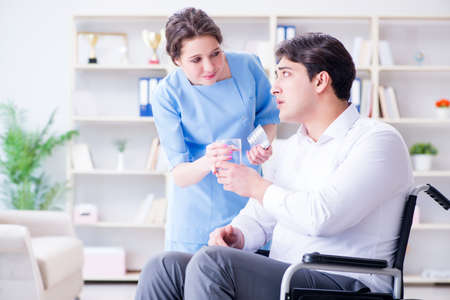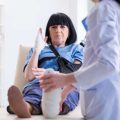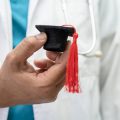Introduction to Multidisciplinary Stroke Rehabilitation
Stroke is a leading cause of long-term disability in the United Kingdom, affecting thousands of individuals and their families each year. The journey towards recovery is often complex and requires more than just medical intervention; it demands a comprehensive, patient-centred approach that addresses the physical, psychological, and social dimensions of care. In the UK, stroke rehabilitation has increasingly adopted a multidisciplinary model, recognising that no single profession holds all the answers when it comes to supporting stroke survivors. This collaborative approach brings together specialists from various backgrounds—including physiotherapists, occupational therapists, speech and language therapists, nurses, doctors, psychologists, and social workers—to create tailored rehabilitation plans that reflect each patients unique needs and goals. By working collectively, multidisciplinary teams are able to provide holistic care that goes beyond symptom management, enabling stroke survivors to regain independence and improve their quality of life within the community.
2. Key Members of the Multidisciplinary Team
The effectiveness of stroke rehabilitation in the UK relies heavily on the collaborative efforts of a multidisciplinary team (MDT). Each professional brings unique expertise to address the complex and varied needs of stroke survivors. Below is an overview of the core team members and their specific roles within the rehabilitation process:
| Professional | Key Responsibilities |
|---|---|
| Physiotherapist | Focuses on improving mobility, strength, balance, and coordination. Physiotherapists design tailored exercise programmes, assist with walking aids, and work to maximise physical independence. |
| Occupational Therapist | Assesses and supports patients in regaining skills for daily living, such as dressing, bathing, and cooking. Occupational therapists recommend adaptations at home or work to enhance independence. |
| Speech and Language Therapist | Helps patients with communication difficulties, including speech, language, and swallowing issues. They deliver therapy sessions and advise on alternative communication methods when necessary. |
| Nurse | Provides ongoing medical care and monitoring, manages medication regimes, and offers support for continence issues. Nurses also educate patients and families about managing health post-stroke. |
| Social Worker | Assists with emotional wellbeing, social integration, and access to community resources. Social workers offer practical advice on benefits, housing, and support services for both patients and carers. |
Each member’s contribution is vital to a holistic approach in stroke rehabilitation. Their close coordination ensures that patients receive comprehensive care tailored to their individual goals and circumstances—an approach strongly supported by the NHS framework. Regular MDT meetings facilitate information sharing and joint decision-making, which are fundamental aspects of effective stroke recovery in the British context.
![]()
3. Coordinated Care Pathways in the NHS
Within the NHS, multidisciplinary teams (MDTs) are at the heart of stroke rehabilitation, ensuring that patients benefit from a seamless journey from acute care to community-based recovery. MDTs typically comprise physiotherapists, occupational therapists, speech and language therapists, specialist nurses, consultants, psychologists, and social workers. Their collaboration is structured around coordinated care pathways designed to minimise fragmentation and promote continuity.
Care Planning Meetings
A key feature of MDT operation within the NHS is the regular care planning meeting. These meetings bring together professionals from different disciplines to review each patient’s progress and reassess goals. By pooling their expertise, team members can adapt treatment plans responsively—whether it’s adjusting physiotherapy intensity or introducing new communication strategies for speech recovery. Importantly, these meetings ensure that rehabilitation is tailored to the patient’s evolving needs and personal circumstances, reflecting both clinical evidence and local NHS guidelines.
Communication Strategies for Joined-Up Care
Effective communication underpins successful MDT working in stroke rehabilitation. The NHS has developed various mechanisms for information sharing—ranging from electronic health records accessible across services to standardised handover protocols when patients move between hospital and community settings. Dedicated liaison roles, such as stroke coordinators or case managers, help maintain consistency and act as points of contact for both patients and families. This joined-up approach reduces the risk of duplicated efforts or conflicting advice, which can otherwise hinder recovery.
Challenges and Continuous Improvement
While coordinated care pathways are central to effective stroke rehabilitation in the UK, challenges remain. Variations in service provision across regions can affect how well MDTs function, especially when resources are stretched. Nevertheless, ongoing efforts within the NHS focus on refining care pathways—through audit, patient feedback, and integration of new evidence—ensuring that every stroke survivor receives high-quality, joined-up support on their road to recovery.
4. Benefits of Collaboration for Patients and Families
In the context of stroke rehabilitation, the collaborative approach adopted by multidisciplinary teams (MDTs) brings tangible benefits not only to patients but also to their families. The collective expertise of physiotherapists, occupational therapists, speech and language therapists, nurses, psychologists, and social workers ensures a comprehensive recovery plan that addresses the multifaceted needs of each individual.
Analysis of Improved Outcomes
Evidence from UK clinical settings shows that team-based rehabilitation leads to better functional outcomes for stroke survivors. Through coordinated goal-setting and regular case discussions, MDTs ensure that interventions are timely and tailored. This often results in faster recovery rates, enhanced mobility, and greater independence in daily living activities compared to care delivered by isolated practitioners.
| Area of Improvement | Team-Based Rehabilitation | Single Practitioner Approach |
|---|---|---|
| Recovery Speed | Accelerated due to coordinated therapy | Slower progress, risk of overlooked needs |
| Functional Independence | Higher likelihood of regaining self-care skills | Limited improvement in complex tasks |
| Holistic Health Outcomes | Mental, physical, and social aspects addressed equally | Mainly focuses on physical recovery |
Patient Satisfaction and Engagement
The involvement of multiple professionals in a patient’s care pathway fosters a sense of reassurance and trust. Patients are more likely to feel listened to and valued when their concerns are addressed from several perspectives. This enhances motivation and engagement with therapy programmes, which is crucial for achieving the best possible outcomes.
Support for Relatives and Carers
The ripple effect of MDT collaboration extends to relatives and carers. Family members receive guidance on how best to support the patient at home, access to psychological support, and clear communication regarding progress. This is particularly important in the UK, where community-based care and family involvement are emphasised.
Summary Table: Key Benefits for Families
| Benefit Area | Description | Cultural Relevance (UK Context) |
|---|---|---|
| Information Sharing | Regular updates from all team members reduce uncertainty for families. | Aligns with NHS values of transparency and patient-centred care. |
| Psycho-social Support | Access to counselling and carer training sessions. | Tackles carer stress—an acknowledged challenge in British health policy. |
| Continuity of Care | Smoother transitions from hospital to home or community services. | Supports integration with local authorities and voluntary sector services. |
Overall, the collaborative approach championed by multidisciplinary teams ensures that stroke rehabilitation is not only clinically effective but also empathetic to the lived experiences of patients and their families. By pooling expertise and maintaining open channels of communication, MDTs uphold high standards of care reflective of the UKs holistic approach to health and wellbeing.
5. Challenges in Multidisciplinary Practice
Despite the clear benefits of multidisciplinary teams (MDTs) in stroke rehabilitation, there are significant challenges that can hinder their effectiveness within the UK context. One prominent barrier is communication. Even with regular MDT meetings, miscommunication can occur between professionals such as physiotherapists, occupational therapists, speech and language therapists, nurses, and social workers. For example, a physiotherapist may prioritise mobility goals while a speech therapist focuses on swallowing safety, potentially leading to conflicting priorities for patient care if information is not clearly shared. Another challenge is resource limitation. NHS Trusts across the UK frequently face constraints in staffing levels and funding, which can restrict the availability of specialist team members or delay essential interventions. In some cases, patients may experience longer waiting times for therapy sessions or less frequent input from certain disciplines due to staff shortages or high caseloads. Differing professional perspectives also play a role. Each discipline brings its own approach and set of values to stroke rehabilitation, which can sometimes result in disagreements over treatment plans or discharge readiness. For instance, an occupational therapist may advocate for prolonged inpatient rehabilitation to optimise independence at home, while a hospital administrator might be under pressure to free up beds for new admissions. These differences require careful negotiation and mutual respect among team members. In the UK, initiatives such as joint goal-setting meetings and shared electronic health records have been introduced to address these barriers, yet variability in implementation remains. Overcoming these challenges demands ongoing commitment to open communication, flexible resource management, and collaborative decision-making tailored to each patients needs.
6. Future Directions in Stroke Rehabilitation
As we look ahead, the future of stroke rehabilitation within the UK is shaped by ongoing innovations, enhanced training protocols, and evolving policy frameworks that directly influence the effectiveness of multidisciplinary teams (MDTs). The integration of digital health technologies, such as tele-rehabilitation platforms and data-driven outcome monitoring, is already beginning to transform the way MDTs collaborate and deliver care. These advancements enable professionals from various specialities—physiotherapists, occupational therapists, speech and language therapists, nurses, and psychologists—to communicate more efficiently and tailor interventions with greater precision.
Continuous professional development remains a cornerstone for ensuring that MDT members are equipped with the latest evidence-based practices. In response to emerging research and technological progress, British healthcare institutions are increasingly investing in training programmes that foster inter-professional learning and practical simulation. This not only improves clinical skills but also strengthens team cohesion and understanding of each discipline’s contributions.
On the policy front, recent NHS directives emphasise integrated care systems (ICS) and patient-centred pathways. These policies advocate for breaking down silos between health and social care providers, thereby enabling seamless transitions for stroke survivors across different stages of their rehabilitation journey. Such developments underscore the necessity for MDTs to remain agile and responsive to system-level changes while keeping patient outcomes at the heart of their practice.
Looking forward, it is imperative that British healthcare continues to champion innovation while safeguarding the foundational principles of teamwork and holistic care. Ongoing evaluation of new models—such as community-based rehabilitation and personalised goal setting—will be essential in ensuring equitable access and improved functional outcomes for all stroke survivors. As multidisciplinary teams adapt to these changing landscapes, their collaborative spirit will remain integral to delivering effective, compassionate, and forward-thinking stroke rehabilitation services.


